Although the weather may grow colder come winter, birdwatching doesn’t have to slow down in the later months of the year. Continue reading below to learn about 7 birds that spend their winters in Indiana, as well as where you may see them and how to identify them.
It’s important to note that this list focuses exclusively on year-round species found in Indiana, not migratory species that winter in Indiana. With that in mind, let’s dive in!
1. Great Horned Owl
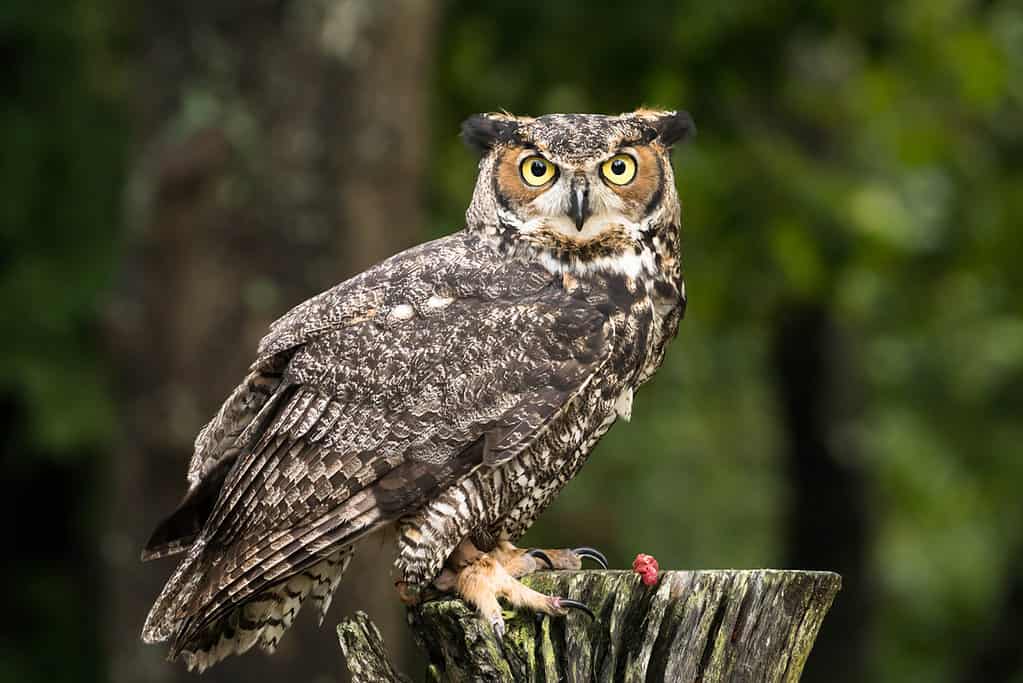
The great horned owl is named for its large ear tufts.
©iStock.com/makasana
Great horned owls (Bubo virginianus) are one of the most common raptors found throughout much of North America. They are also one of the most notable of birds that spend their winters in Indiana. They are year-round residents throughout the entire state.
If you’re looking to see a great horned owl this winter, you’ll be glad to know that they live in a variety of different habits. While they are more common in wooded areas, agriculture fields, and similar regions, you may also be able to see them in urban settings.
The great horned owl can be best identified by their large size. They also sport notable ear tufts for which they are named.
2. Black-Capped Chickadee
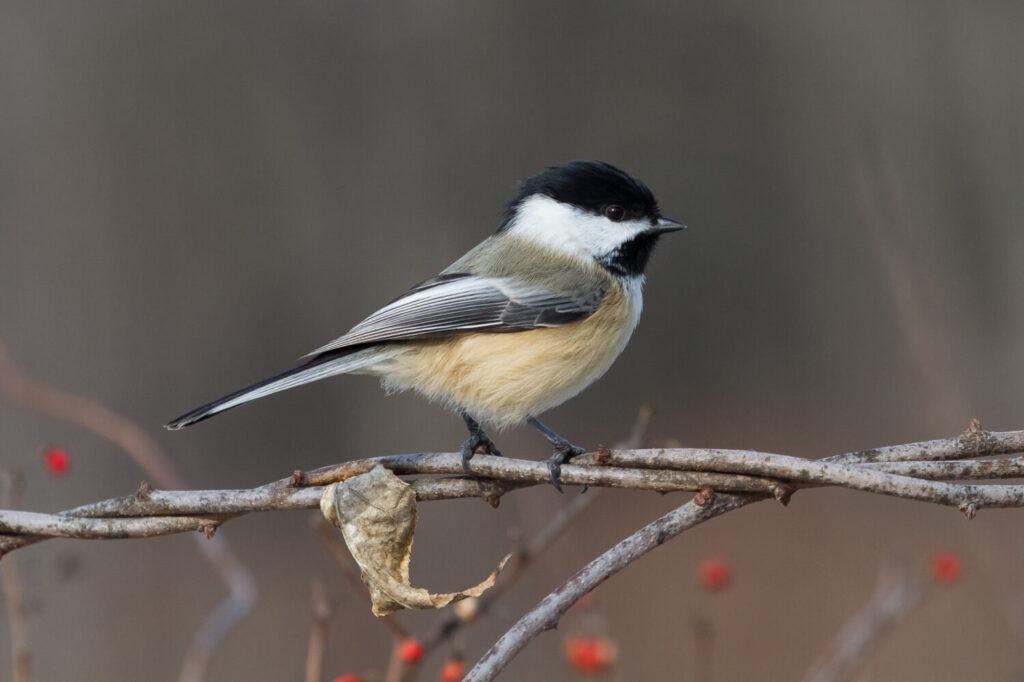
Black-capped chickadees are a year-round resident of southern Indiana.
©Paul Roedding/Shutterstock.com
The black-capped chickadee (Poecile atricapillus) is another year-round resident of Indiana. However, unlike the great horned owl, you may not be able to spot this bird in the southern extent of the state.
Throughout much of their range, the black-capped chickadee lives in forests or open woods. However, they are also common in parks and other areas where humans may reside. In fact, even during the winter, the black-capped chickadee is a common backyard bird that often visits feeders.
Black-capped chickadees are known for their cute, rough appearances. You can identify them by their namesake black caps. In areas where the two species exist together, they may be confused for the Carolina chickadee.
3. Sharp-Shinned Hawk

Sharp-shinned hawks are often found lingering near birdfeeders looking for smaller prey.
©Vizz Effect/Shutterstock.com
Great horned owls aren’t the only raptors to call Indiana home during the winter months. In fact, many of the birds that spend their winters in Indiana are raptors, including the sharp-shinned hawk (Accipiter striatus). Sharp-shinned hawks are both a migratory and residential species, depending on the area. However, in Indiana, they are a year-round bird that can be found throughout the entire state.
Sharp-shinned hawks live in areas that include either forests or forest edges. They are not tolerant of regions with scarce trees except during migration. Although they themselves might not eat from your birdfeeder, they will prey on the small songbirds that do. As a result, you may be able to catch a lucky glimpse of this interesting hawk in your backyard, depending on where you live.
4. Northern Mockingbird
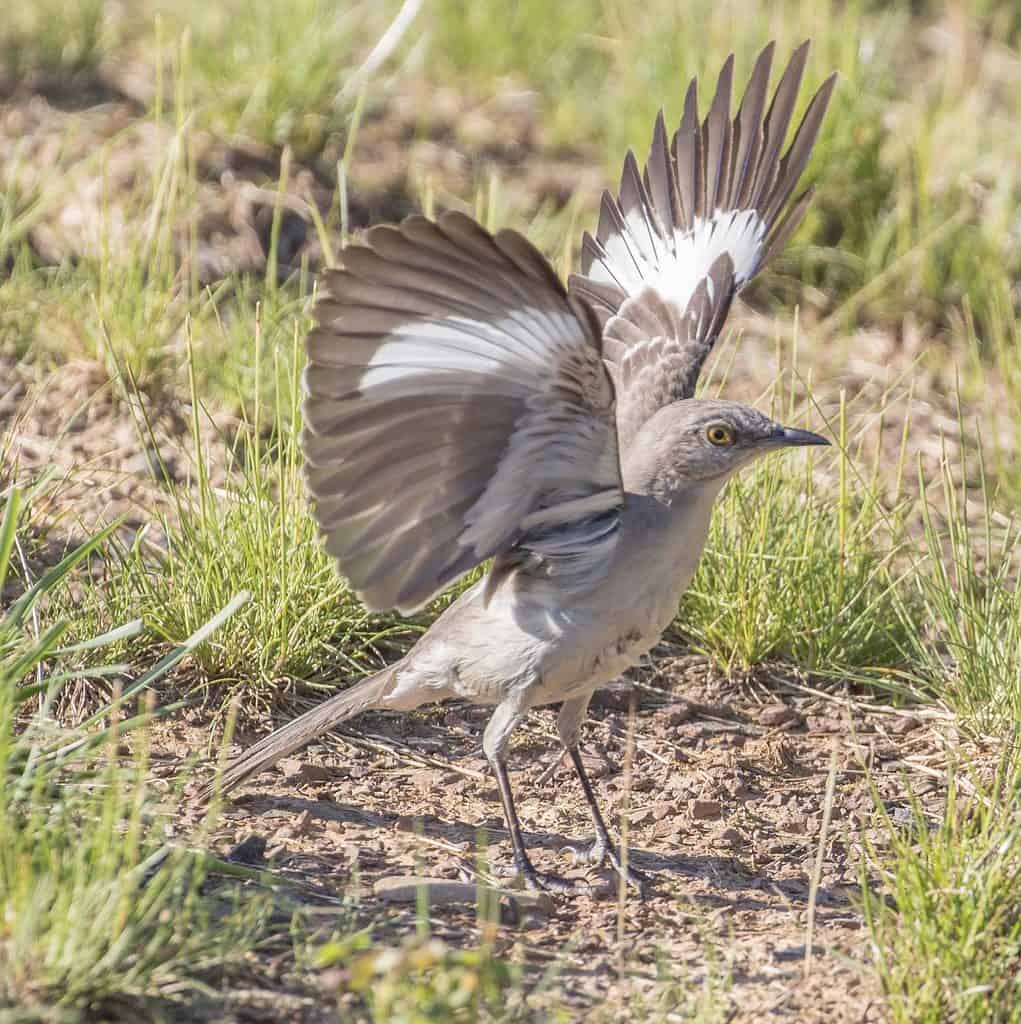
Northern mockingbirds can be highly territorial, often harassing larger birds.
©Jenny Gong/Shutterstock.com
The northern mockingbird (Mimus polyglottos) may not be as large as some of the raptors that spend winter in Indiana, but they are as fierce. This little species is highly territorial and typically stays on the offensive. In fact, it’s not rare at all to see these birds actively harassing other birds mid-flight. They are also known for their seemingly endless singing, which they may carry on even into nighttime.
A common year-round species, they can be found throughout most of the continental United States. This includes the entirety of Indiana, where they readily adapt to a variety of habitats.
5. Tufted Titmouse
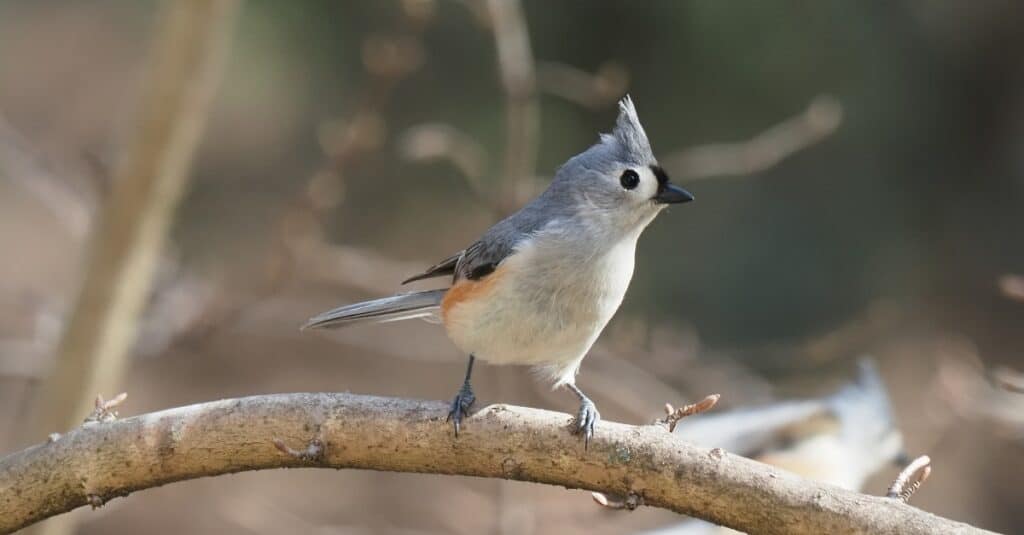
Tufted titmice are named for their large tufted crown.
©iStock.com/Tongtong Chen
Like the northern mockingbird, you can find the tufted titmouse (Baeolophus bicolor) throughout the entirety of Indiana all year. However, unlike the northern mockingbirds, its national range is much smaller, being found only in the eastern region. An overall gray bird, this species is named for its striking crown of feathers.
Tufted titmice most often live in forests. However, as with many other species of songbirds, they are also common in suburban areas like parks.
6. Red-Tailed Hawk
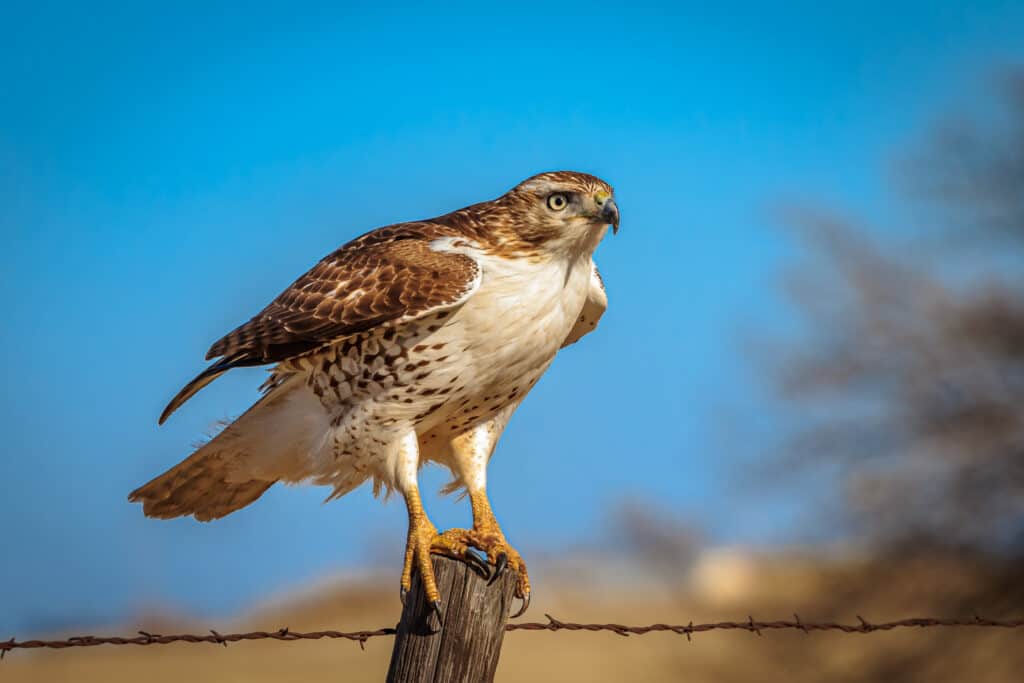
Red-tailed hawks may be confused with other species that winter in Indiana.
©Richard G Smith/Shutterstock.com
The red-tailed hawk (Buteo jamaicensis) is likely one of the most common hawk species throughout North America. Widely distributed across the continent, they can be found year-round in all of Indiana. As a result, the red-tailed hawk is one of the most commonly spotted large birds that spend their winters in Indiana.
Red-tailed hawks can often be easily mistaken for the red-shouldered hawk. This is especially true because their ranges often overlap. However, the red-tail hawk lacks the other’s checkered pattern, and they also have their notable name-sake red tail feathers.
7. Red-Shouldered Hawk
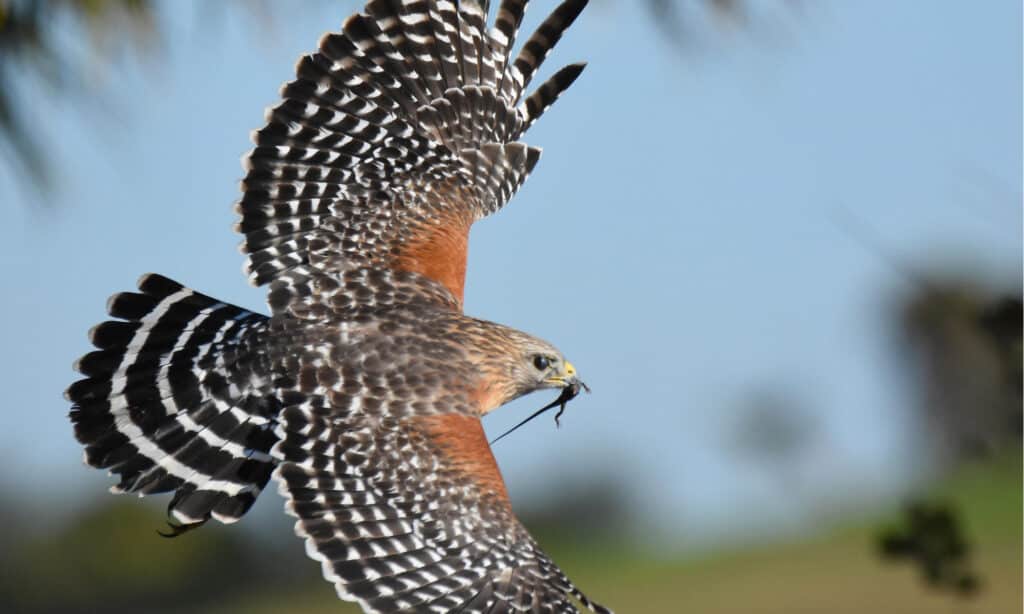
Red-shouldered hawks can be best identified by their checkered pattern.
©MTKhaled mahmud/Shutterstock.com
In contrast to the red-tailed hawk (Buteo lineatus), the red-shouldered hawk has no notable red markings on its underside. Instead, it sports a checkered design across its breast and wings, with black bands on the white tail. They also have a smaller range than their relatives, being located most commonly in the southeastern United States. However, they are also a year-round species throughout all of Indiana.
The photo featured at the top of this post is © Lester Graham/Shutterstock.com
Thank you for reading! Have some feedback for us? Contact the AZ Animals editorial team.






